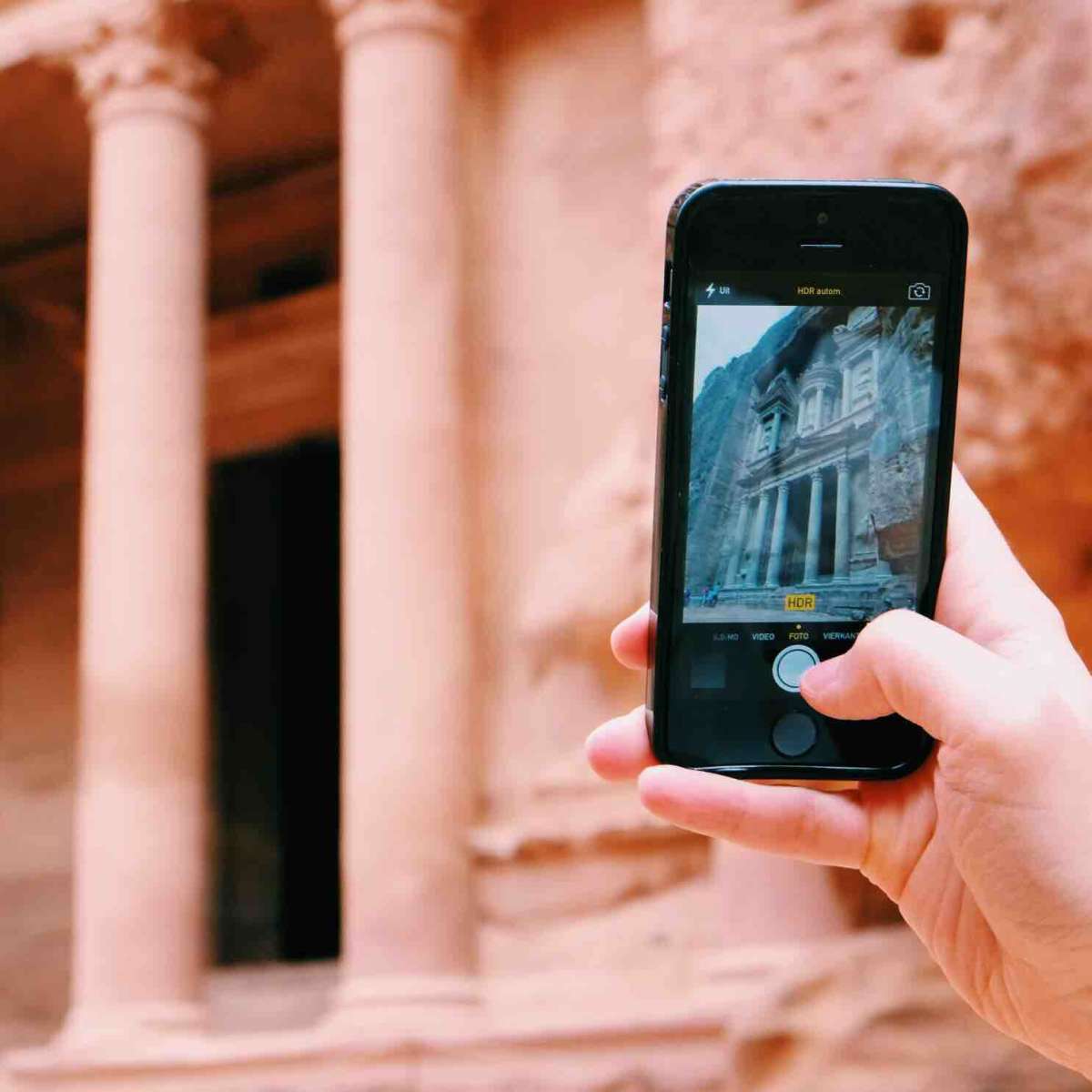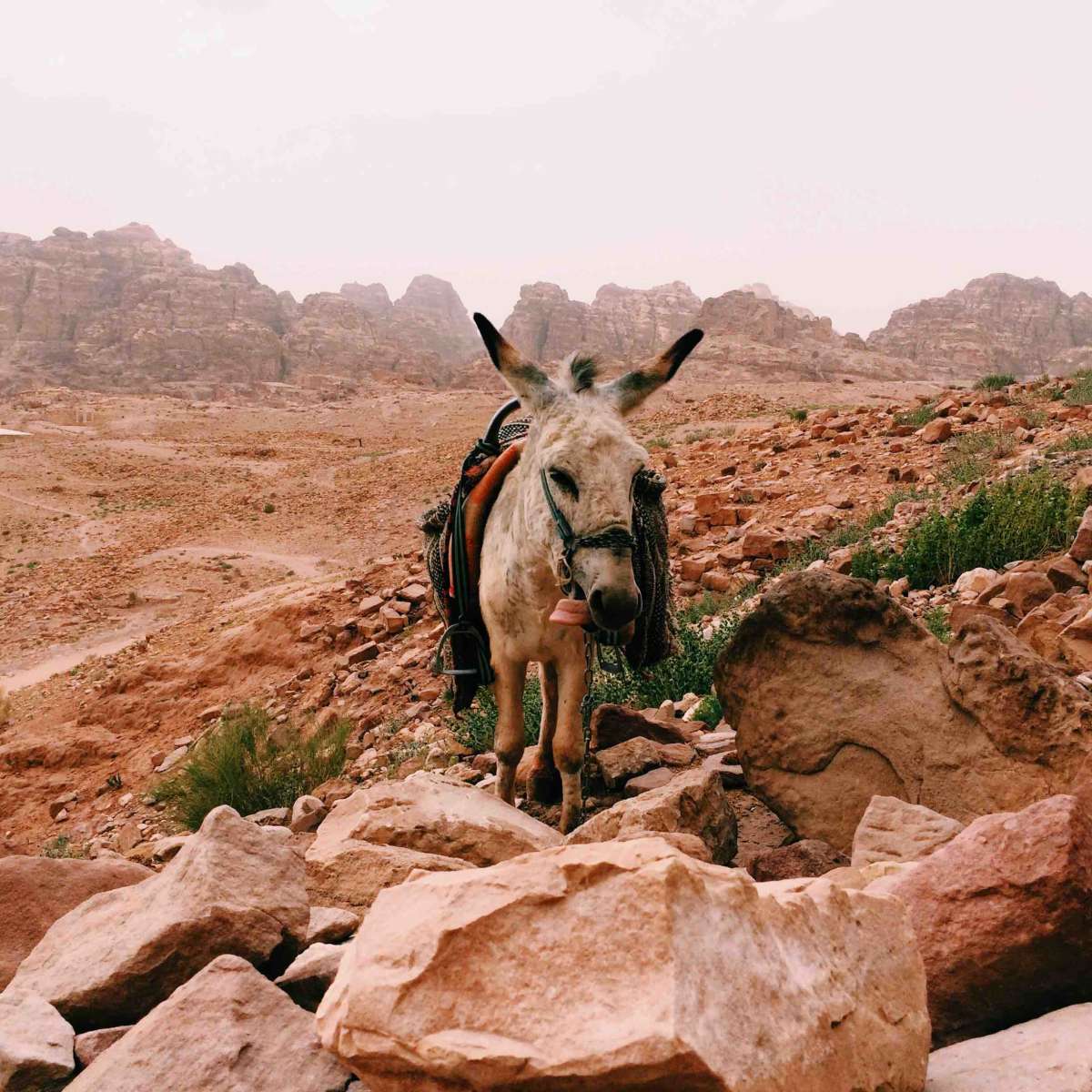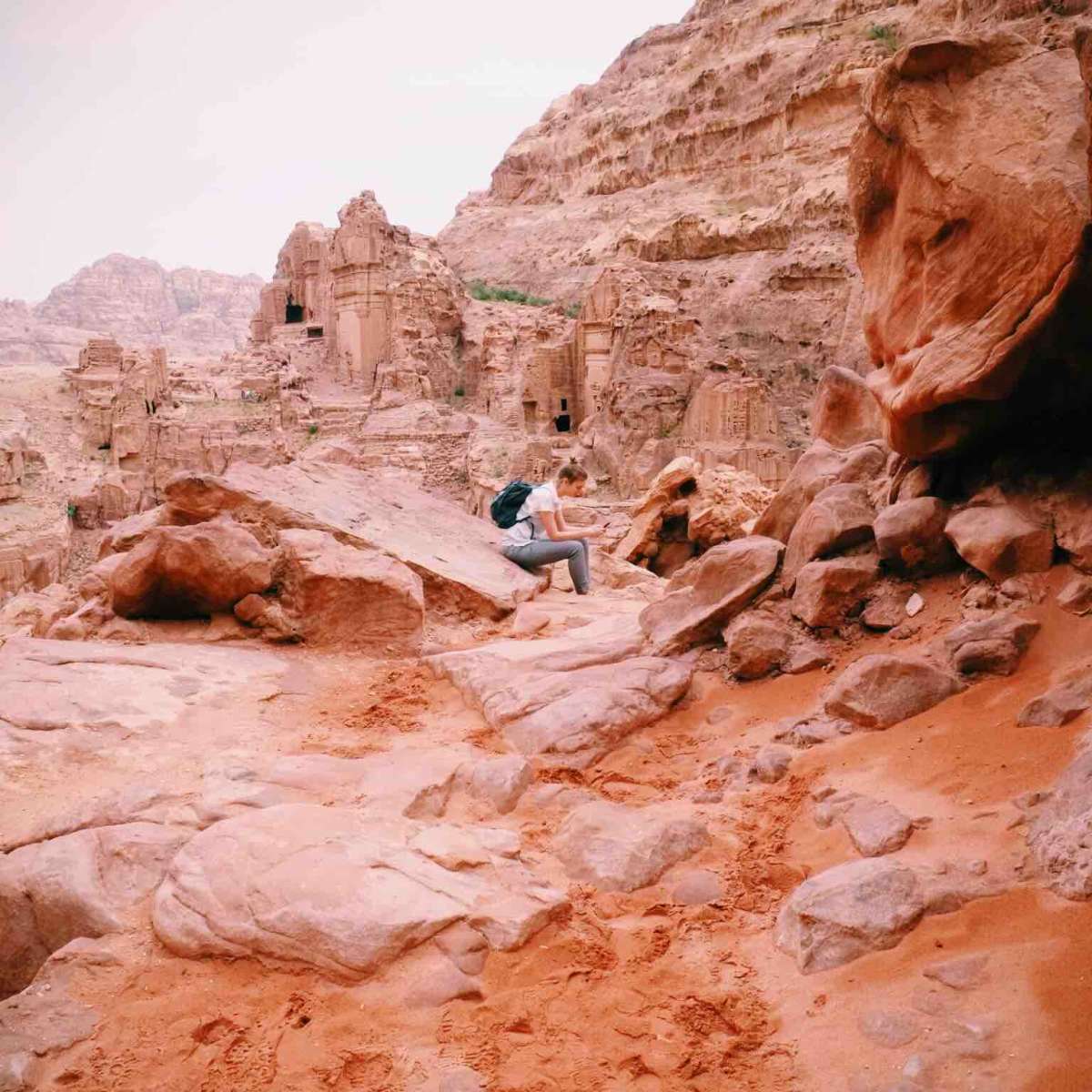Rediscovering Petra
Travel with me to Jordan’s spectacular old temples

The early visitor that treads through the narrow gorge over what looks like a theme park road, can only experience halve the excitement that the Swiss Johann Ludwig Burckhardt must've felt when he rediscovered the ruins of Al Khazneh, more than 200 years ago. 'Petra' had been undiscovered for almost a thousand years, until Burckhardt found it, disguised as a Muslim sheik.
Even though I can't begin to imagine what it must feel like to make such a discovery, it was still mind boggling to see the more than 2000 years old Treasury appear through the cliffs.
 Petra’s Treasury.
Petra’s Treasury.
 A donkey licks his face, in the big desert area that surrounds the ruins of Petra.
A donkey licks his face, in the big desert area that surrounds the ruins of Petra.
What surprised me most, however, was the extensive size of what Petra has been, or still is. Sure, I've seen the pictures of the Monastery and the Treasury, but the actual city of Petra is so much bigger.
The Greco-Roman Theatre, for instance, has more than 8.500 seats - that's how many people lived in the middle of the desert. At least. And there's more: only five percent of 'The Red City' has yet been excavated.
 If you take one of the less popular walking routes, you’ll be rewarded with the sight of this old temple.
If you take one of the less popular walking routes, you’ll be rewarded with the sight of this old temple.
Most of the ruins are old tombs, and some are in better shape than others. Although the entrance fee is fifty euros (about 65 dollars and a hell of a lot of money in the local currency), there is almost no security on site. Not a very good thing, if you imagine how bad fast the ruins are tattering.
One can get to Jordan on a day-trip from Israel, but I would advise to fly to Jordan and start your trip in the capital Amman. From there, you can take a small minibus to the temples and tombs of Petra.
 My girlfriend Saskia took so many photos of Petra’s beauty, that she had to take a break to delete some older pictures.
My girlfriend Saskia took so many photos of Petra’s beauty, that she had to take a break to delete some older pictures.
The hues of youth
upon a brow of woe,
which Man deemed
old two thousand years ago,
Match me such marvel
save in Eastern clime,
a rose-red city half as old as time.
_______
John William Burgon

Story by Joost Bastmeijer, a freelance travel writer and photojournalist from The Netherlands, currently traveling through Africa. Check out my photos on Instagram at instagram.com/joostbastmeijer or on my website: joostbastmeijer.com!
